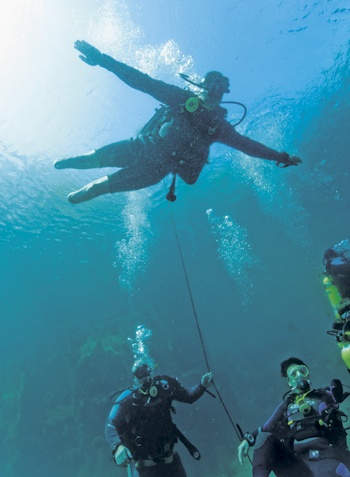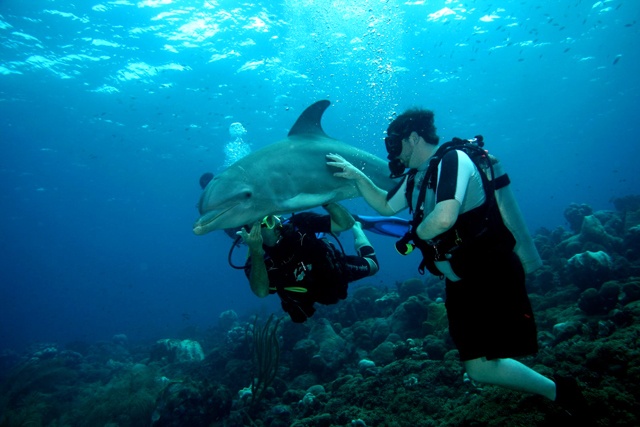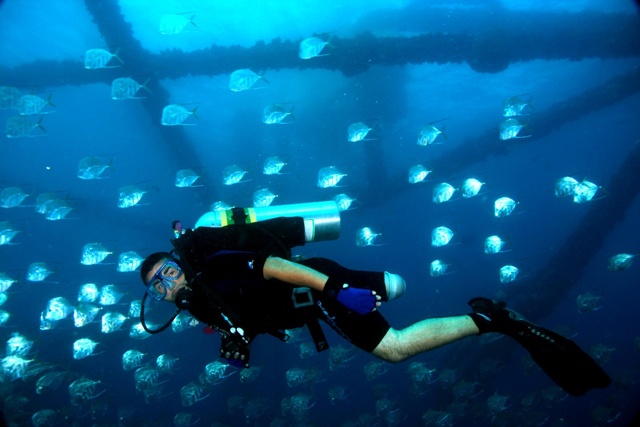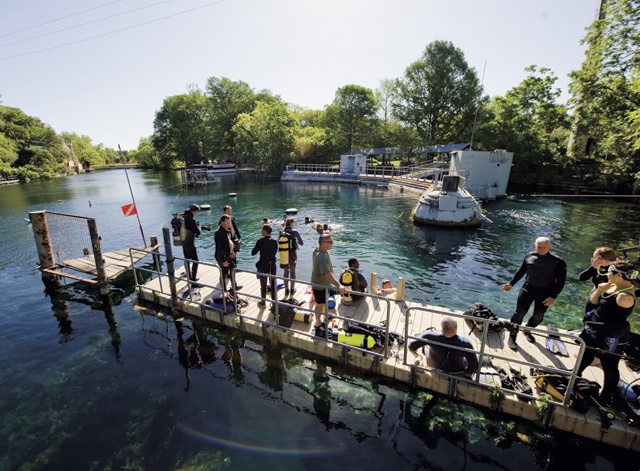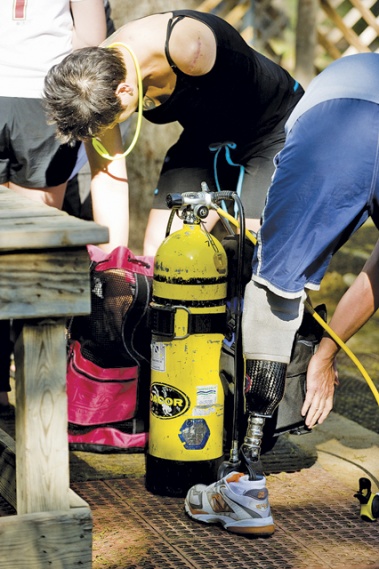Army intelligence analyst and combat engineer Tim Mithofer could only watch, trapped in the gun turret, as some 200 Iraqi soldiers, some on foot and others in pickup trucks, surrounded the mine-resistant armored patrol vehicle in which he was riding in 2008.
Mithofer and his fellow soldiers, who had set up a roadblock to protect a supply convoy, lost radio communication with the rest of the convoy and watched, helpless, as the Iraqis closed in, some throwing rocks. No gunfire was exchanged, but throughout the two-hour ordeal, Mithofer says the Americans feared for their lives.
“We felt like sitting ducks out there,” he recalls. “There was no way to get out of that vehicle.” The nightmarish memory, which Mithofer compares to being trapped with other people inside a locked car, “keeps me up at night.”
A few days later, things got worse. Mithofer was on a mission to search for improvised explosive devices (IEDs) when the driver swerved to avoid what he thought was an IED. The vehicle went left, and Mithofer, again riding in the gun turret, went right—at 50 mph. The sharp swerve slammed him into the turret, fracturing his pelvis in seven places.
Mithofer, who had broken a hip four months earlier, was evacuated to Germany and eventually to San Antonio’s Brooke Army Medical Center (BAMC), where it took months for his bones to heal. Three years later, Mithofer still battles post-traumatic stress disorder (PTSD) and constant pelvic pain.
Except underwater.
During his rehabilitation at BAMC, Mithofer took a scuba diving class for disabled soldiers taught by John Duggan, retired chief of intelligence for the Air Force’s major air-training command. Mithofer quickly discovered that beneath the surface, he felt free from claustrophobia and a feeling of helplessness.
Uncomfortable in crowds and tight spaces he can’t control, Mithofer no longer attends football games at Texas A&M University, his alma mater, and can’t relax in movie theaters. But last year, he explored two shipwrecks off the coast of Panama City, Florida. He and fellow divers held onto cables connected to dive reels as they entered the wrecks.
“It was everything I could do to keep myself calm,” the 45-year-old Mithofer says, “but I did it, and that’s an important step for me. It won’t be as hard the next time.”
Mithofer says when he scuba dives, he feels no pain. “None,” he says. “I don’t know if it’s the water taking weight off, psychological, or both, and I don’t care.”
So, while physical pain keeps Mithofer from running, lifting weights or engaging in other high-impact sports, he can excel at diving. He has achieved master diver status through the National Association of Underwater Instructors and is working on the next step: certification as a scuba diving instructor. He credits much of his success to Duggan, who began teaching diving in 1964.
In 2007, Duggan started teaching scuba diving classes at the newly opened Center for the Intrepid, a state-of-the-art physical rehabilitation facility for disabled veterans (including amputees and burn victims) on the Fort Sam Houston campus next to BAMC.
Duggan estimates that about 200 veterans have become certified divers through his classes there. “I was 35 years in the military and lucky enough not to get hurt,” says Duggan, 71. “I just wanted to pay back a little bit.”
Duggan is not alone in his quest to help disabled veterans through scuba diving. John Thompson, 45, founded Soldiers Undertaking Disabled Scuba (SUDS). The privately funded nonprofit organization, which is a chapter of the Wounded Warrior/Disabled Sports Project, is based at the Walter Reed Army Medical Center in Washington, D.C.
Thompson, who was not deployed while serving in the Army National Guard from 1985 to 1992, later taught recreational scuba diving to military personnel and civilians at the Guantanamo Bay U.S. Naval Base in Cuba, where he and his wife, Michelle, were stationed.
In 2005, John and Michelle, an Army pathologist, were transferred to the Walter Reed facility. Thompson, who years earlier had taught diving in the Caribbean, found himself wanting to help the disabled veterans he saw coming through.
“It kind of hit me in the gut,” he says. “I was asking myself, ‘What do I have to offer?’ I didn’t have an answer.”
Then American Red Cross representatives at the medical facility asked Thompson about his background. Because he was a scuba diving instructor, the next step was logical: He started volunteering his time to an aquatic therapy program. It became clear that he could incorporate scuba work with rehabilitation, and the first SUDS class was held in February 2007.
Most of his diving students are amputees, Thompson says. Disabled veterans also are admitted for traumatic brain injuries, burns, shrapnel wounds and PTSD. All of them, he says, can benefit from the diving program.
Serious injuries can take an individual to a dark place, Thompson says: “But when soldiers see they can do something as challenging as diving, and do it as well as anybody else, it’s a real confidence booster. They figure, ‘If I can scuba dive, I can kayak, or golf, or whatever.’ ”
With help from contacts in places where he once lived and worked, Thompson organizes SUDS trips to such exotic locales as St. John, U.S. Virgin Islands; Puerto Rico; and Curaçao, a southern Caribbean island. The Thompsons now live in San Antonio, where John assisted Duggan at the Center for the Intrepid from 2008 to 2010. But Thompson’s main responsibility remains with SUDS: He serves as an instructor on about 10 trips a year and thrills to see the soldiers experience weightlessness in the water.
Thanks to something called adaptive diving, disabled veterans enjoy virtually no limits underwater, Thompson says. Adaptive diving features four main elements: prosthetics, webbed gloves, weight-integrated buoyancy-control devices and diver-propelled vehicles.
But most of the divers bypass the vehicle, Thompson says, noting that they want the full diving and swimming experience. For example, someone missing a leg below the knee can put on a swim leg and press a button to push down the prosthetic foot and lock it into position for placement of a fin.
Often, the pain from injuries and wearing prosthetics goes away in the water, Thompson says: “These guys are tough. They have that can-do attitude. They adjust.”
Tim O’Leary, president and owner of American Diving on South Padre Island, sees that can-do attitude firsthand. O’Leary has taken groups of disabled veterans to dive around offshore oil rigs and down to the Texas Clipper, a World War II-era ship that was sunk in open water about 17 miles off Padre Island to create an artificial reef—an underwater habitat and diving destination.
On one of O’Leary’s trips last year, medically retired Air Force Staff Sgt. Dan Acosta saw a whale shark. These school-bus-sized, slow-moving sharks—which, fortunately for humans, feed mostly on plankton—hang out around offshore rigs in the summer, but only a few lucky divers have seen one. “That was cool, real cool,” says Acosta, who was injured while disarming a roadside IED in Baghdad in 2005. His left arm was amputated at the shoulder, and he sustained burns on both legs. Acosta now lives in Chicago and plans to continue diving.
Retired Army Staff Sgt. Orlando Gill, 38, has seen great white sharks while diving near Guadalupe Island in Mexico. The San Antonio resident lost his right leg to a direct hit from a rocket-propelled grenade while on patrol in Iraq in 2004. A diver since 2006, he’s now a field representative for Disabled Sports USA, based in Rockville, Maryland.
“Diving definitely helped me,” says Gill, who wears a prosthetic leg in the water. “Physically, I have my own independence. Mentally, it’s very calming. A lot of soldiers, like me, have PTSD and deal with a lot of stress. In the water, there is no stress.”
Mithofer, who lives near San Antonio, in Cibolo, with his wife, Becky, and two daughters, agrees and says that’s why he wants to help Duggan at the Center for the Intrepid.
“Becoming an instructor is a chance to help guys much worse off than I am,” Mithofer says. “I have all my limbs. I see a lot of fellow wounded warriors not knowing what to do and falling into a pattern where they don’t do anything. I tell them to find something to be inspired about, get happy about something, take it day by day.”
Diving, Mithofer says, has given him a new direction. “I’m so different from before,” he says. “When I was hurt, the doctor said to me, ‘You’ll never be the same again,’ and he was right.”
Veterans who learn to dive at the Center for the Intrepid often complete the open-water portion of their classes at the Aquarena Center in San Marcos. A recent group of two veterans from the Army and one from the Air Force, each missing part of a leg, arrived in a Wounded Warrior van. The divers suited up and entered the water paired with instructors. Backpacks, towels and gear bags littered the sunny dive dock. A prosthetic leg and a pair of crutches leaned against the railing. Another prosthesis, complete with a shoe, lay across a pack.
Clouds of bubbles rose to the surface of the San Marcos Springs, marking the location of divers beneath. Just visible some 20 feet below, two shapes in dark wetsuits wearing shiny tanks, each propelled by a single flipper, moved effortlessly along.
These veterans were learning what Mithofer says is a key to adaptive diving: Water is the great equalizer.
“It’s just a big sense of accomplishment, being able to go down there and see all those things and come up successfully,” Mithofer says. “It’s like a completed mission.”
——————–
Melissa Gaskill, a freelance writer based in Austin, is a frequent contributor to Texas Co-op Power.
